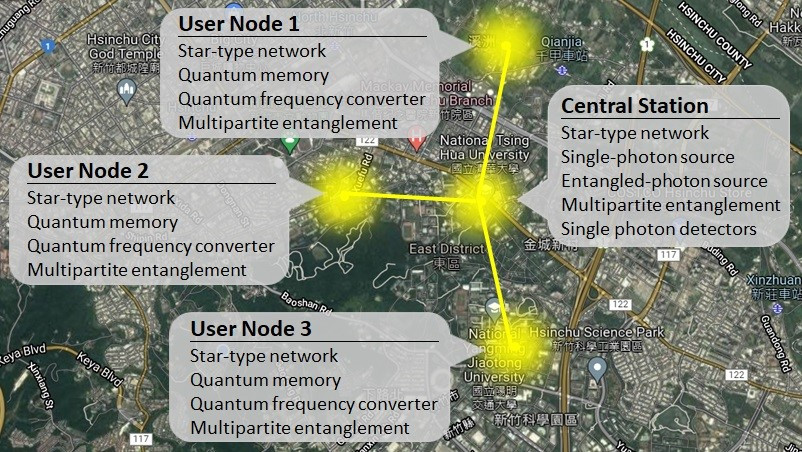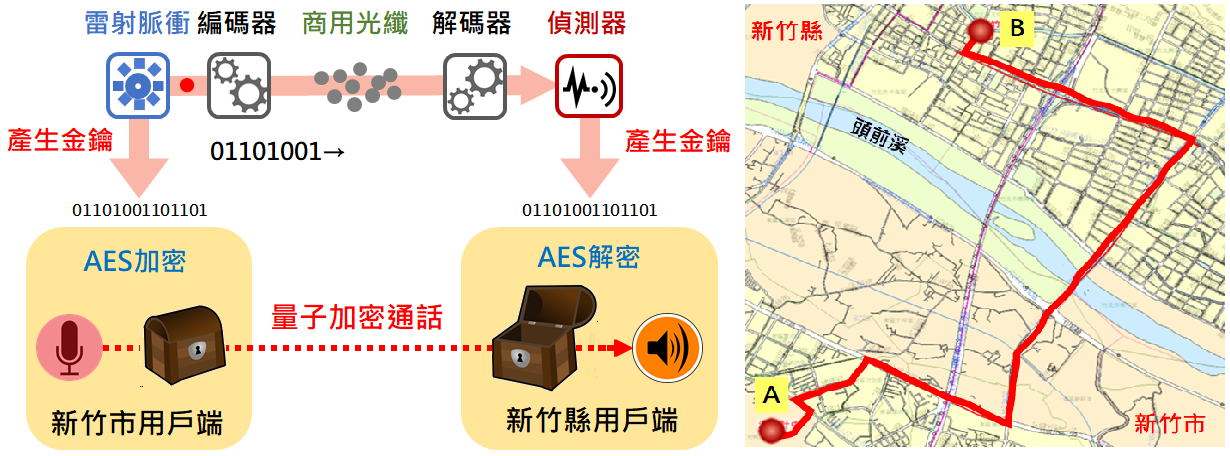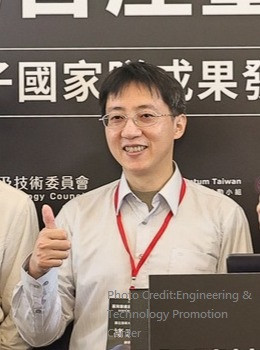第一列
Quantum communication lies at the heart of unconditionally secure communication as well as quantum internet, which find potential applications such as distributed quantum computing and very-long-baseline telescope. We are developing a quantum network consisting of intracity or intercity user nodes in the metropolitan area that are capable of operating quantum and classical communication in parallel. We are also developing advanced quantum technologies for boosting the performance of our quantum communication network, including single-photon sources, entangled-photon sources, quantum frequency converters, quantum memories, and single-photon detectors.

A quantum communication network in the metropolitan area
-
Co-PI
-
Ite A. Yu (National Tsing Hua University)
-
Yong-Fan Chen (National Cheng Kung University)
-
Shiang-Yu Wang (Academia Sinica)
-
Che-Ming Li (National Cheng Kung University)
Intercity quantum key distribution
We have demonstrated the first intercity quantum key distribution (QKD) in Taiwan using a commercial fiber. The QKD allows us to create and distribute secure keys at a few kbps over 10 kilometers and an overall loss of 6 dB. Together with the star-type quantum network that we demonstrated last year, it paves the way for developing a nationwide quantum network.

Left panel: Illustration of long-distance encrypted communication using the intercity quantum key distribution.
Right panel: Illustration of intercity fiber.
Universal relation between the conditional auto-correlation function and the cross-correlation function of biphotons
The conditional auto-correlation function (CACF) and the cross-correlation function (CCF) are the essential properties of biphotons. In this work, we experimentally studied the relation between the CCF and CACF with a hot-atom SFWM biphoton source, and further derived an analytical formula for the relation. Based on general theory, the derived formula is also valid for the SPDC biphoton sources and various background photon compositions. The theoretical predictions from the formula are consistent with the experimental data, suggesting that one can use the formula and the CCF to obtain the CACF without the time-consuming three-fold coincidence count measurement. This work demonstrated a valuable tool for analyzing a vital property of how the heralded photons are close to Fock-state single photons. Our study advanced the knowledge of the connection between the CACF and CCF in all kinds of biphoton sources.
Reference:
- Optics Express 32, 13657 (2024)

(a) Cross-correlation function (CCF) versus delay time between the heralding and heralded photons. Data were accumulated for 2 minutes. Circles are the experimental data. The data reveal a detection rate of 5100±120 counts/s and a maximum value of CCF of 11. (b) Conditional auto-correlation function (CACF) versus delay time. Data were accumulated for 120 minutes. Circles are the experimental data. The minimum value of CACF is 0.34. Blue line is the theoretical prediction calculated with the proposed formula and the data in (a). The predictions and data are in good agreement.
